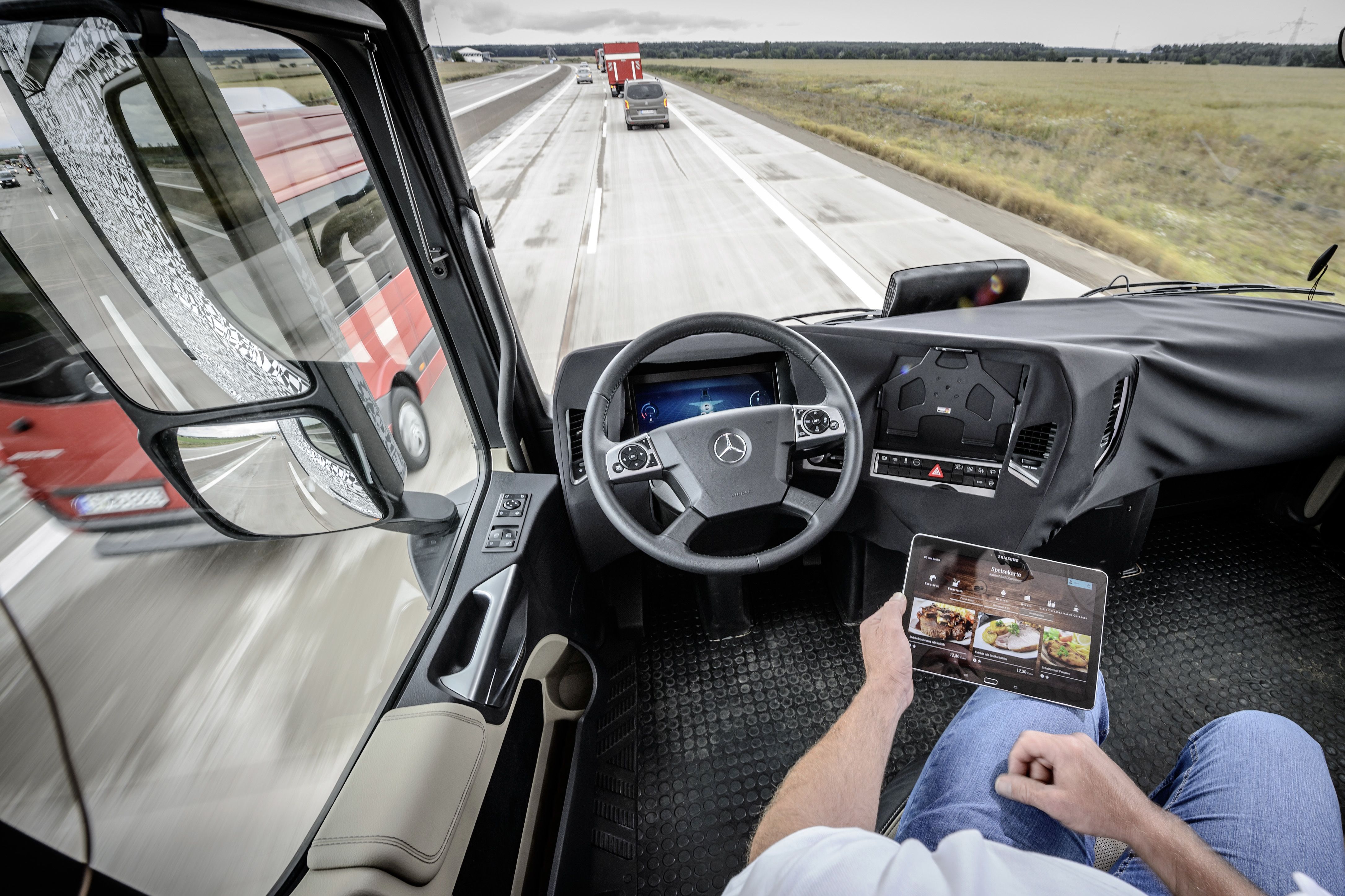Deep Learning Accelerates Self-Driving Truck Revolution
Stop and think for a moment
How do you program a Class 8 truck to drive down the interstate? How do you go from there to instructing it to maneuver a 53-foot trailer in an urban area? How many millions or perhaps billions of lines of computer code would be required to figure out all the decisions necessary to make these day-to-day driving functions successful in an autonomous vehicle? It turns out, it may not be traditional lines of code at all, but rather a very different construct already being applied to recognize your friends in Facebook and decipher your language in Google, Alexa, Siri, Cortana and others.
 Thanks to an advanced form of artificial intelligence, deep learning, which once seemed impossible, is becoming increasingly possible as the automotive and trucking worlds are speeding down the road to fully autonomous vehicles.
Thanks to an advanced form of artificial intelligence, deep learning, which once seemed impossible, is becoming increasingly possible as the automotive and trucking worlds are speeding down the road to fully autonomous vehicles.
Deep learning is the critical enabler of the self-driving truck vision because it helps software engineers build a vehicle that can essentially think on its feet – or wheels – without human intervention. But how?
Deep learning systems for vehicles operate at the fleet or manufacturer level, where they can collect and analyze data from billions of miles traveled by individual vehicles. The system is initially programmed with rules of the road, then “trained” in the IT lab or data center with tens of thousands of hours of traffic video that teach it to recognize signage and the on-road behaviors of vehicles, humans, animals or other items it may encounter. Only then is it released to the road for that “classroom training” to be refined by observation of a few million miles with human test drivers. […]
Written by Tom Mayor, national strategy leader for consulting firm KPMG’s Industrial Manufacturing practice, and Todd Dubner, a principal in KPMG’s Strategy practice. This is one in a series of periodic guest columns by industry thought leaders.
read more – copyright by www.trucks.com


Deep Learning Accelerates Self-Driving Truck Revolution
Stop and think for a moment
How do you program a Class 8 truck to drive down the interstate? How do you go from there to instructing it to maneuver a 53-foot trailer in an urban area? How many millions or perhaps billions of lines of computer code would be required to figure out all the decisions necessary to make these day-to-day driving functions successful in an autonomous vehicle? It turns out, it may not be traditional lines of code at all, but rather a very different construct already being applied to recognize your friends in Facebook and decipher your language in Google, Alexa, Siri, Cortana and others.
Deep learning is the critical enabler of the self-driving truck vision because it helps software engineers build a vehicle that can essentially think on its feet – or wheels – without human intervention. But how?
Deep learning systems for vehicles operate at the fleet or manufacturer level, where they can collect and analyze data from billions of miles traveled by individual vehicles. The system is initially programmed with rules of the road, then “trained” in the IT lab or data center with tens of thousands of hours of traffic video that teach it to recognize signage and the on-road behaviors of vehicles, humans, animals or other items it may encounter. Only then is it released to the road for that “classroom training” to be refined by observation of a few million miles with human test drivers. […]
Written by Tom Mayor, national strategy leader for consulting firm KPMG’s Industrial Manufacturing practice, and Todd Dubner, a principal in KPMG’s Strategy practice. This is one in a series of periodic guest columns by industry thought leaders.
read more – copyright by www.trucks.com
Share this: